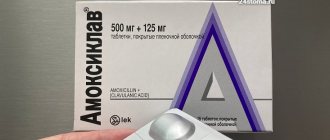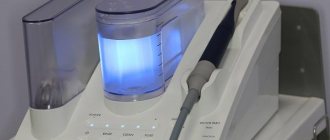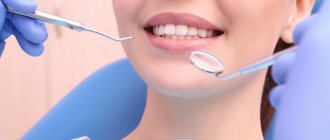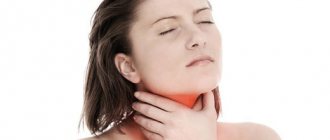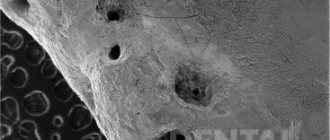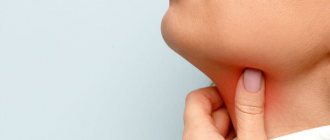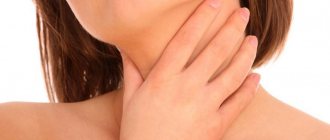Content:
- The importance of choosing the right medicine
- Conditions that must be met by high-quality compositions 2.1. Iodine preparations 2.2. Chlorine 2.3. Preparations based on hexethidine
- For what purpose is it used?
- Indications for use
- How to rinse your mouth correctly
For various dental diseases, doctors often prescribe oral antiseptics.
They reduce the severity of painful symptoms, wash away pathogens from mucous membranes, and improve local blood circulation. With their help, it is possible to slow down the spread of microbial flora and speed up regeneration reactions. of mouth antiseptics on the market , but this does not mean that all of them are safe and effective. During treatment, it is necessary to use exactly the product prescribed by the dentist. Self-selection of medications often makes therapy ineffective or creates conditions for relapse of infection.
Professional teeth cleaning at the dentist
Professional teeth cleaning includes:
- Removal of hard dental plaque using an ultrasonic device or laser;
- Lightening of tooth enamel using modern gentle AIRFLOW technology;
- Polishing enamel using professional products;
- Treatment with fluoridating compounds that strengthen the enamel;
- Sealing of fissures using resins. This procedure is necessary to protect teeth from carious lesions.
It is important to remember that a healthy oral cavity is not only an aesthetically attractive appearance, but also a guarantee of the health of the body as a whole. Proper oral hygiene and regular visits to the dentist will help maintain the physiologically normal condition of teeth.
The importance of choosing the right medicine
It is impossible to completely destroy microorganisms living in the human mouth. But when treating some diseases and conditions, it is necessary to temporarily reduce their number for a short time. Modern antiseptics help a lot with this.
It should be understood that those solutions that are used to treat the skin should not be taken by mouth. Firstly, it is fraught with poisoning. All sanitizers for external use are not intended for oral use.
Secondly, such therapy is always pointless. This is explained by the fact that the human mouth is inhabited by bacteria. Unsuitable products are inactivated by salivary proteins. This means that they do not work on the mucous membranes of the tongue and gums.
Conditions that quality compounds must satisfy
Good developments used by dentists for aseptic purposes must meet a number of requirements:
- exhibit high activity against fungi, viruses, bacteria;
- provide a reliable clinical effect when used in low concentrations;
- in the case of systemic absorption, do not have a pronounced negative effect on the body or internal organs;
- be characterized by a minimal risk of synthesization;
- do not cause poisoning if used in the dosages established by the manufacturer;
- have a neutral smell and taste.
Among the most popular medications that meet these requirements:
- made from iodine;
- including chlorine;
- containing hexetidine.
Let's look at each type of mouth antiseptic in more detail.
Iodine preparations
Iodine is a substance that exhibits pronounced antiseptic properties. It destroys many fungi and microbes and acts as an effective antiprotozoal. Relieves pain, deodorizes, helps to quickly stop bleeding. They are allowed to cauterize wounds.
When treating mucous membranes, undiluted iodine is not used - it must be diluted in the required proportion. Otherwise, you can get a burn to the delicate membranes, which will take a long time to heal.
Iodine must not be combined with alkali, mercury, enzymes, or oxidizing agents. It is also pharmacologically incompatible with ammonia and ethers.
Chlorine
The most prominent representative of the chlorine-containing group is chlorhexidine, a biguanide derivative. It oxidizes and chlorinates proteins, causing their denaturation. As a result, a pronounced deodorizing and antiseptic effect is ensured, pathogenic tissues are destroyed.
Chlorhexidine is found in many oral antiseptics. It is even included in preventive toothpastes. It destroys gram-negative and gram-positive bacteria, fungi, anaerobes, herpes, facultative aerobes. With regular use, the content of pathogenic microorganisms in saliva is reduced by approximately 80-90%. As a result, the rate of plaque deposition is reduced and stone prevention is ensured.
The therapeutic effect of chlorhexidine is explained by the interaction of its positively charged molecules with negative groups of molecules in the bacterial cell wall. The component quickly penetrates the inflammatory focus, reaches the cytoplasmic layers of the microorganism and kills it.
Interestingly, the product is selectively absorbed onto enamel hydroxyapatite . This means that it does not allow bacteria to multiply on the surface of the dental crown. Since it binds tightly to proteins, the therapeutic effect is prolonged - the release of antiseptic substances occurs gradually.
In addition to antibacterial activity, chlorhexidine also exhibits a weak analgesic effect. It is important to remember that its use on an ongoing basis leads to dysbacteriosis. Therefore, there is no need to use chlorhexidine-containing drugs on an ongoing basis.
Do not combine the additive with soap, alkalis, or anionic detergents. It should be taken into account that it increases the sensitivity of the human body to chloramphenicol, cephalosporins, and aminoglycosides.
Preparations based on hexethidine
Hexethidine is a cell membrane destroyer. It accelerates the death of pathogenic organisms and disrupts the synthesis processes necessary for the spread of pathogenic flora. The antifungal activity of the drug is associated with its ability to interfere with the formation of compounds necessary for the formation of the fungal membrane.
It has been established that hexetidine is effective in pathologies caused by:
- mushrooms of the genus Candida;
- Proteus;
- Pseudomonas aeruginosa.
Medicines containing the component relieve pain, stop the spread of inflammation, deodorize and envelop wounds. They help with candidiasis, stomatitis, glossitis, periodontal disease, aphthae, and increased bleeding of the gums. Hexethidine is allowed to treat microtraumas and purulent-inflammatory areas. It is also used in the antiseptic treatment of root canals in the treatment of periodontitis and pulpitis.
For what purpose is it used?
Antiseptic solutions, gels and ointments are used for dental pathologies that require an integrated approach. They allow you to quickly stop the inflammatory process, efficiently cleanse the mucous membranes of infectious agents, and reduce pain in the teeth and gums. Their use is relevant during the recovery period after dental surgery (including the removal of a diseased tooth), to relieve swelling, and eliminate foul odor.
It should be remembered that drugs of this group can cause negative side reactions. So, sometimes instead of the long-awaited recovery, patients receive:
- tissue irritation;
- itching;
- peeling;
- increased sensitivity of the gums.
If such negative symptoms appear, you should stop treatment and get a second dental consultation . It is possible that the disorder was caused by other drugs that the patient applied to the tissue in parallel with the disinfectant medication. Therefore, it is advisable to immediately clarify the situation.
Indications for use
Each medicine has its own indications for use. Among the common diseases that are successfully treated with the described dental medications are:
- stomatitis;
- tonsillitis;
- angina;
- periodontal disease;
- periodontitis;
- gingivitis;
- ulcers;
- period of gum recovery after tooth extraction.
Medicines reduce the risk of infection and speed up healing if bacteria have entered the wound. But in order to get positive dynamics with their help, you must strictly follow all medical prescriptions and rinse regularly.
Prevention of caries
This pathological process of changes in enamel and hard tissues affects up to 98% of the entire population of the planet, so the relevance of preventive procedures for this disease does not need to be confirmed.
Measures to prevent the occurrence and development of caries:
- It is important to monitor your diet: protein foods, foods that contain large amounts of amino acids, trace elements and vitamins (especially calcium and phosphorus), are an excellent non-drug method for preventing caries.
- At the same time, you should limit your carbohydrate intake, give preference to sweeteners, and avoid drinking too hot or too cold drinks.
- Regular and thorough oral hygiene, which is accompanied by the use of toothpastes that have a therapeutic and prophylactic effect.
- The use of various kinds of complexes of vitamins, macro- and microelements, which the body (especially a growing one) needs most.
- Applications, rinses, baths, electrophoresis, which are carried out by various remineralizing agents.
How to rinse your mouth correctly
In many ways, the results of the procedure are determined by the correctness of its implementation. These are the basic rules that dentists are asked to adhere to:
- Regularity. There is no point in rinsing your teeth and gums only when the urge arises. If the dentist says to use the solution every few hours, that’s what you should do. Otherwise, it will not be possible to achieve positive dynamics.
- Under no circumstances should the prepared medicine The optimal temperature is 36-40 degrees Celsius. If a hotter liquid is used, the affected area will heat up, and high temperatures are known to create suitable conditions for the further spread of pathogenic organisms.
- Do not swallow antiseptic. Most of the drugs in the group presented on the pharmaceutical market are not intended for internal use. They negatively affect the functioning of the gastrointestinal tract.
- You don’t just need to take the solution into your mouth and immediately spit it out, but hold it in the area of the affected tissue for about a minute. Such mouth baths are considered the most effective.
Using antiseptics wisely and giving preference to proven means, you can significantly bring recovery closer even with advanced dental diseases.
Toothbrush
An important requirement is its compliance with the anatomy of the oral cavity. A slightly curved and narrow toothbrush head is considered the most suitable option. As for its bristles, it is better if it is presented in the form of sparsely spaced tufts, because too thick bristles, on the contrary, make it difficult to care for your teeth, reducing the effectiveness of cleansing. Don’t forget about the hygiene of the brush itself: after each use, it should be rinsed under running water and stored in a separate glass with the bristles facing up. To maintain high cleaning power and prevent the accumulation of microorganisms, you should change the brush once a month.
